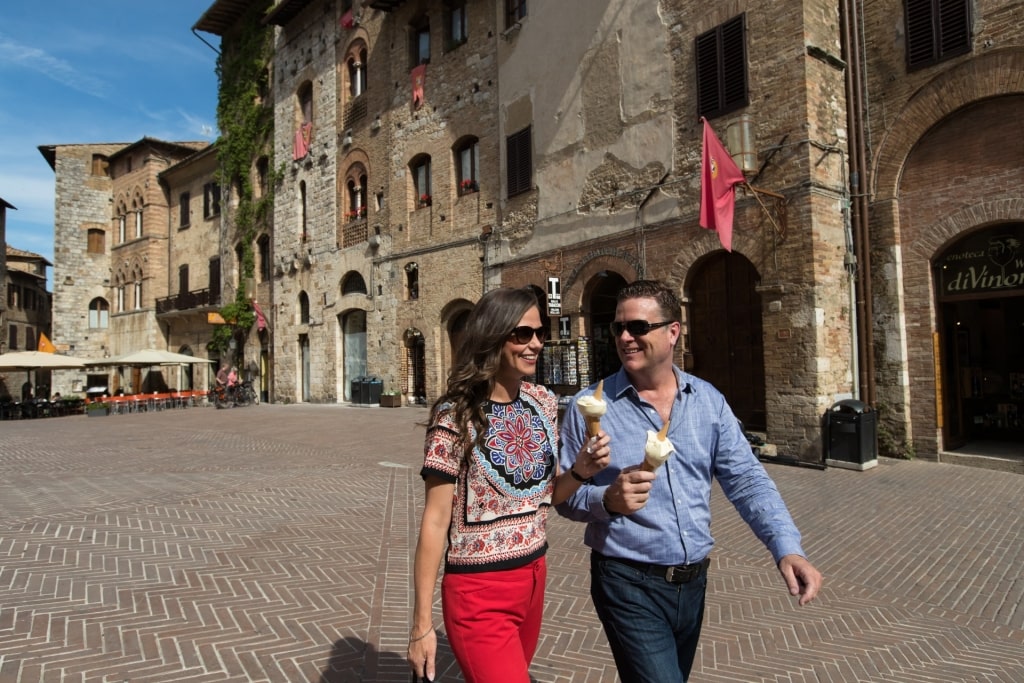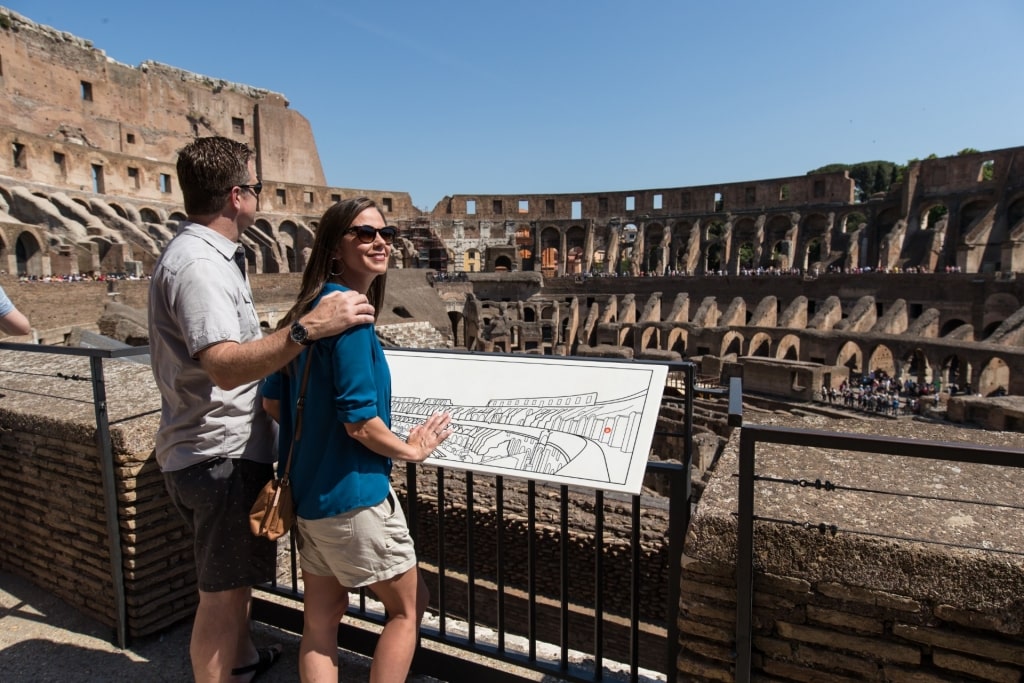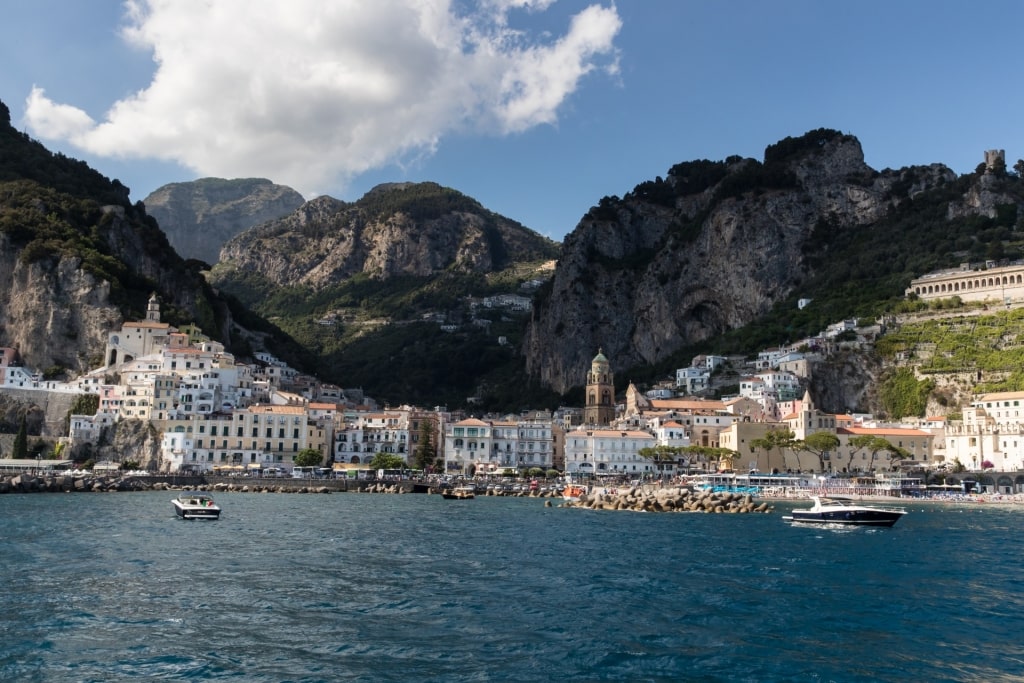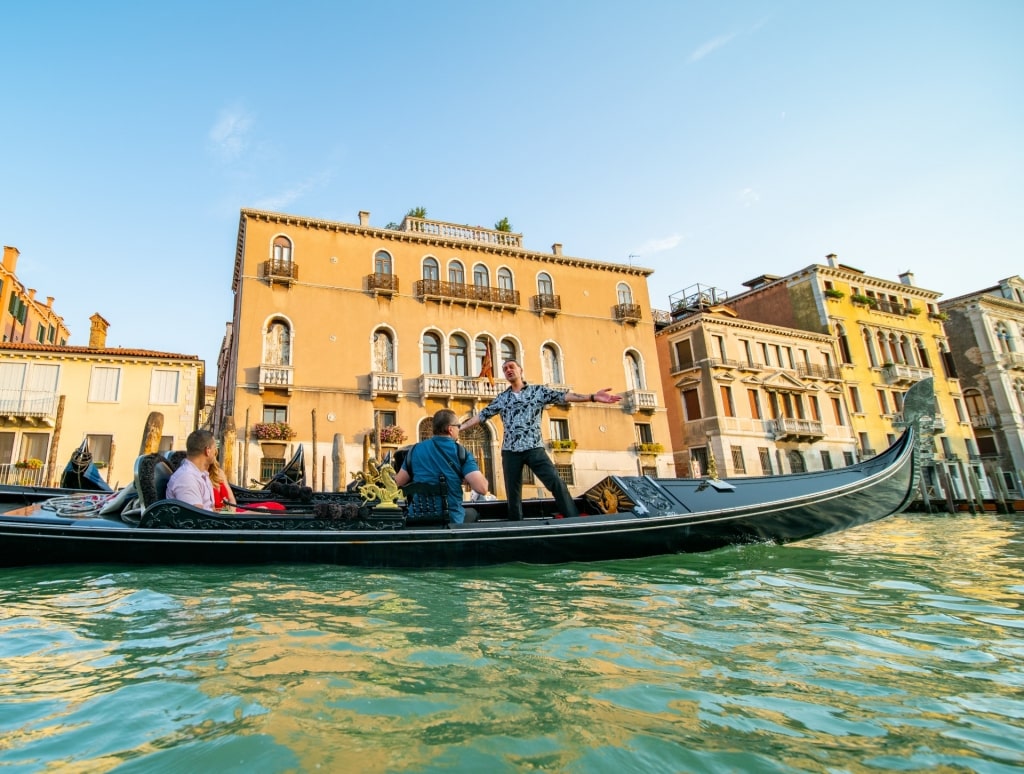The best time to visit Italy is spring, summer, and early fall, although cities like Rome and Venice have so much to see that they’re worth going to at any time of year.
Most of Italy enjoys a Mediterranean climate, with the south and the islands of Sicily and Sardinia warmer than the north. This typically means long, hot, and mainly dry summers with warm nights. Winters are mild and wet, except on higher ground where snow falls.
Visiting Italy by Season
Summer

Florence
Summers in Italy are hot and dry, with temperatures increasing the further south you go. The beaches begin to get busy by early June, although locals prefer to wait until the sea has warmed up in July and August to take a dip.
The hot days can lead to thunderstorms, although these are usually short and sharp. Expect daily highs of between 86°F and 91°F (30°C to 33°C) at this time, and humid nights.
Pace yourself with sightseeing as places like Pompeii, near Naples, have little shade. Follow the example of the locals with an extended coffee break in the morning, a long lunch, a siesta, and gelato in the afternoon. The days are long, and cities and towns buzz until late at night.
Fall
Italy in September through mid-October is arguably the best time to visit, with the sea still warm enough for swimming in September, and the grapes ripe on the vines.
The rolling hills of Tuscany seem to glow golden in the softer light, and La Vendemmia, the grape harvest, usually begins in late September. October in Italy brings truffle season, with a chance to try fresh truffles in local restaurants.
Expect pleasant temperatures in fall. Florence, for example, enjoys average daily temperatures of 70°F (21°C) in September.
By November, the tourist season has wound down and places like the towns of Cinque Terre are quiet, with the walking trails closed for winter. November is the rainiest month of the year.
Winter
December to February in Italy can be cool and wet. In the north, snow falls on the Alps and in Sicily, Mount Etna often wears a cap of snow, especially beautiful to look at on a clear day.
In February, Venice gears up for the annual Carnival, a pre-Lenten period of lavish costume balls. Venice is especially atmospheric in winter, with the lagoon often shrouded in mist. But it’s chilly, with average daily temperatures of 39°F or 4°C.
Rome is a few degrees higher, with a January average of 46°F (7.7°C).
Spring
Spring in Italy is a wonderful time to visit. The countryside is green and brilliant with scarlet poppies in May, making this the perfect time for hiking.
Locals are beginning to emerge and sit in sidewalk cafés. Rome is already enjoying average highs of 74°F (23°C) by May. Summer towns along the coast are waking up and preparing for the high season.
When Is Rainy Season?
Italy’s rainiest season is from late October to January, with spring showers possible again in April. Precipitation falls as snow on higher ground in winter, in the Alps, along the highest peaks of the Apeninne chain that forms the spine of Italy, and on Etna in Sicily.
November is the rainiest month, with Florence typically receiving 4.44 inches or 113mm and Rome 4.48 inches or 114mm.

Colosseum, Rome
When Is High Season?
High season in Italy is the summer months of June, July, and August. The latter is especially busy as it’s when Italians themselves head to the beaches—and in Italian culture, generally speaking, there is no issue with crowds.
Slow down during these months to take the heat into account and be sure to pre-book popular attractions that Italy is known for, such as the Colosseum in Rome, the Doge’s Palace in Venice, and the Uffizi in Florence, to skip the lines.
High season is when places like Portofino and the Amalfi Coast reach peak glamor, with superyachts bobbing in scenic harbors and restaurants full of beautiful people enjoying long lunches.

Amalfi Coast
When Is Shoulder Season?
Shoulder season in Italy is April, May, September, and October, before and after the summer heat and outside the cooler, damper winters.
These are the best months for sightseeing, with fewer crowds and a more tolerable climate. The sea, especially in the south, is warm enough for swimming up to early October.
When Is Low Season?
Low season in Italy coincides with the cooler weather, from November to March. Many Italians, especially those living in the north, head for the ski slopes of the Dolomites and Italian Alps in winter.
Beaches in Italy are quiet and seasonal beach restaurants are often closed, although the cities are as lively as ever; this is actually a great time for a trip that’s heavily culture-focused, as the museums will be quieter.

Venice
Do you want to discover more about Italy’s culture, history, and beautiful coastline? Browse our Italy cruises and plan your next vacation.


